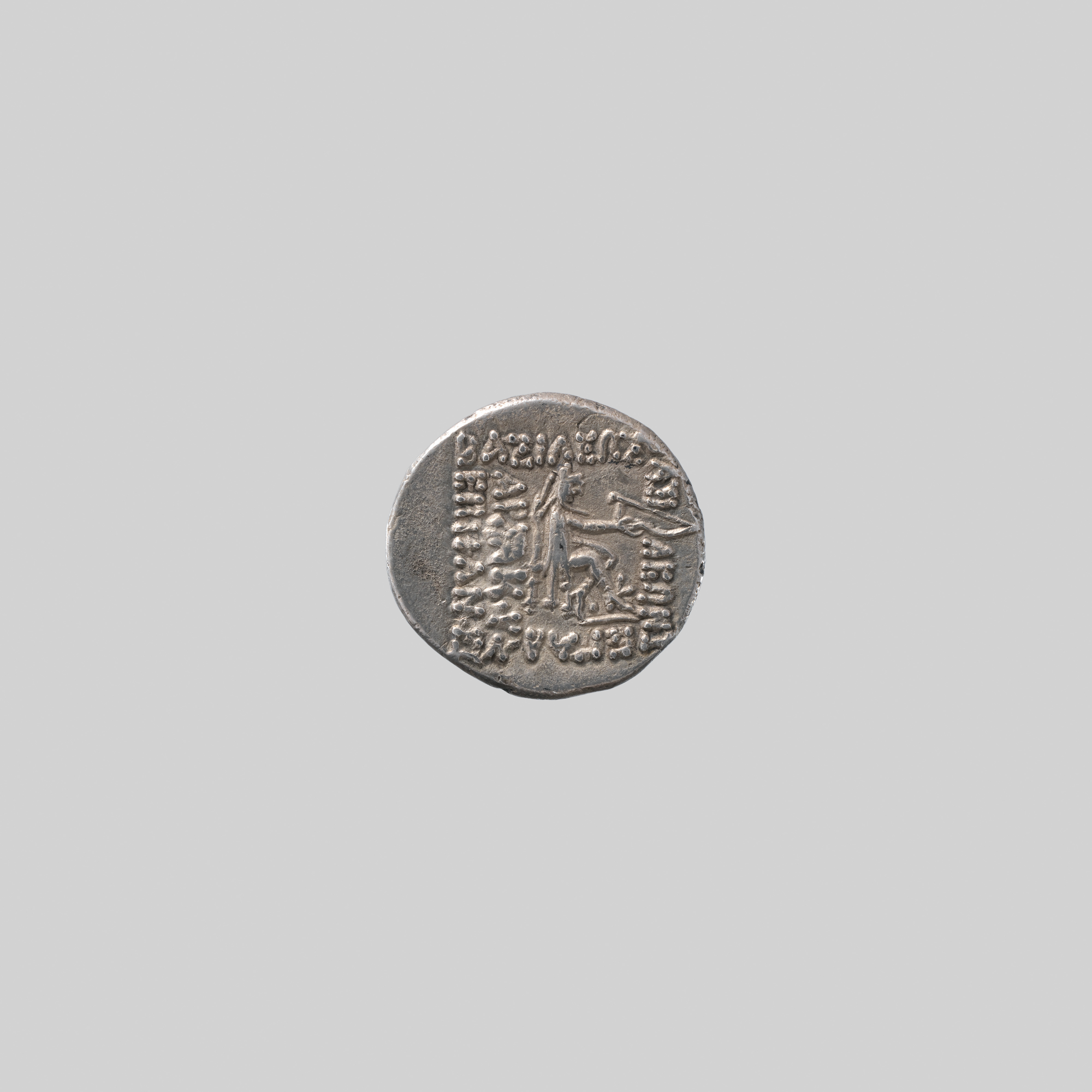Silver drachm
Not on view
Numismatists – the scholars who study coins – refer to the ‘front’ side of the coin, which usually features the head of a person or god, as the ‘obverse,’ and the ‘back’ side as the ‘reverse.’
On the obverse of this silver coin, a bust of the king faces to the left. He has a long beard and wears a domed hat with earflaps (called a ‘tiara’) with a diadem (the headband worn by victorious athletes in ancient Greece) tied over it. The tiara is scalloped and decorated with an eight-pointed star.
The reverse shows a seated man facing right. He wears sleeves and trousers under a cloak, as well as a pointed hat with earflaps and a diadem and heeled boots with laces. In his hand he holds a bow with the bowstring upwards. He sits on a high-backed throne. A Greek inscription, reading "of great king of kings Arsaces the renowned," surrounds him.
This coin was struck by the Parthian king Mithridates II (reigned ca. 121–91 B.C.). The king on the obverse is probably meant to be Mithridates himself, wearing a diadem as a symbol of victory and a tiara, the main type of Parthian royal crown. The identity of the figure on the reverse is unknown; perhaps it is an idealized Parthian king, depicted as an archer. The archer’s pose is modeled on the coins struck by the Seleucid kings, which show the Greek god Apollo. The Parthians did not strike coins before the foundation of their empire in the third century B.C., so they based their early coins on those of the Seleucid Empire, whose domains they conquered.
The inscription on this coin, like those on almost all Parthian coins, names the first ruler of the empire Arsaces I (reigned ca. 247–217 B.C.), rather than the current ruler Mithridates. It may be a reference to the dynasty founded by Arsaces, or perhaps the seated archer is meant to represent him. It is also possible that all Parthian kings were called ‘Arsaces’ as a title or throne name.
Due to rights restrictions, this image cannot be enlarged, viewed at full screen, or downloaded.
This artwork is meant to be viewed from right to left. Scroll left to view more.



